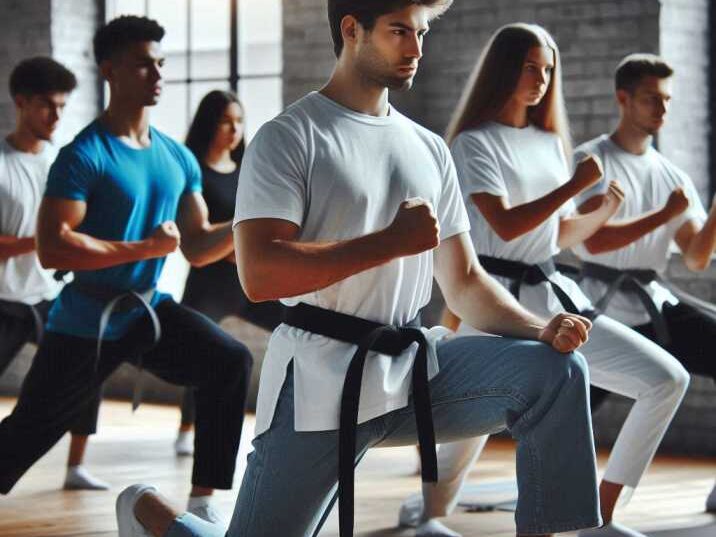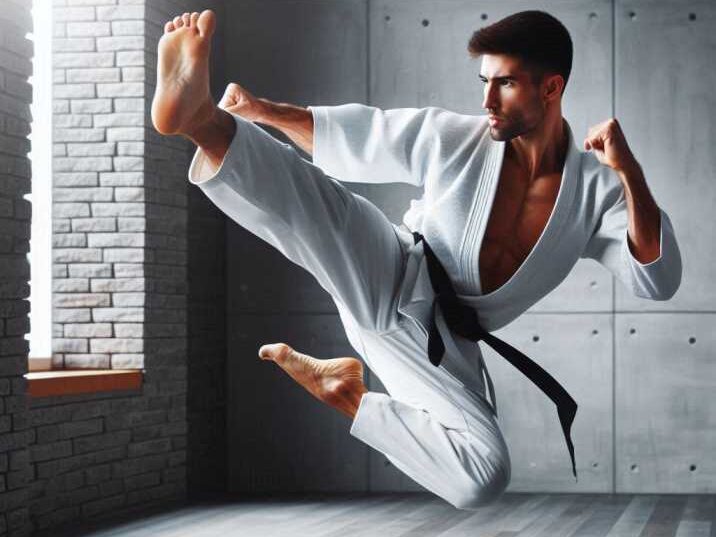Introduction
Table of Contents
Have you ever wondered if martial arts could be your ticket to better fitness and overall health? The idea might sound intriguing, and you’re not alone in pondering this. For many people, martial arts isn’t just about self-defense or combat skills; it’s a holistic approach to wellness that can transform both your body and mind. In this blog post, we’ll explore how can you get in shape with martial arts training, enhance your focus, and improve your overall quality of life. Whether you’re a seasoned athlete or a beginner looking for a fun way to stay active, read on to discover why martial arts might be the perfect fit for you.

What is Martial Arts?
Martial arts encompass a wide range of disciplines, each with its unique techniques, philosophies, and benefits. These practices have roots in ancient cultures and have evolved over centuries to include styles like Karate, Taekwondo, Judo, and Brazilian Jiu-Jitsu. At its core, martial arts training involves physical conditioning, mental discipline, and self-defense techniques. But there’s so much more to it than just learning how to fight.
The Physical Benefits
Martial arts training is an excellent way to improve your physical fitness. Depending on the style you choose, you can expect to engage in a variety of activities that boost your strength, flexibility, and cardiovascular health. Here’s how:
Cardiovascular Health
Most martial arts styles involve high-intensity training sessions that get your heart pumping. Whether it’s a fast-paced Taekwondo sparring session or an intense Judo match, your cardiovascular system gets a significant workout. This helps improve your endurance and stamina, making everyday activities easier to manage.
Strength and Flexibility
Martial arts require you to use various muscle groups, often in ways you’re not accustomed to. Kicking, punching, grappling, and throwing all work different muscles, leading to increased strength and muscle tone. Additionally, the stretching routines that are an integral part of martial arts training improve your flexibility, reducing the risk of injuries.

Weight Loss and Body Composition
If weight loss is one of your goals, martial arts can be highly effective. The combination of cardiovascular exercise and strength training helps you burn calories and build lean muscle mass. Over time, this can lead to a more toned and sculpted physique.
Mental Discipline and Focus
One of the most underrated aspects of martial arts is its impact on your mental well-being. The discipline required to master martial arts techniques translates into improved focus and concentration in other areas of life.
Stress Relief
Engaging in martial arts provides an excellent outlet for stress. The physical exertion releases endorphins, which are natural mood lifters. Additionally, the meditative aspects of martial arts, such as controlled breathing and mindfulness, help reduce anxiety and promote a sense of calm.
Improved Concentration
Martial arts training requires you to focus intensely on your movements and techniques. This heightened level of concentration can spill over into other aspects of your life, such as work or school, making you more productive and efficient.
Building Confidence
Achieving new belts or mastering complex techniques provides a sense of accomplishment that boosts your self-esteem. This newfound confidence can positively impact your personal and professional life, making you more assertive and proactive.
Social Connections and Community
Joining a martial arts dojo or school offers more than just physical and mental benefits. It also provides a sense of community and belonging.
Making New Friends
Martial arts classes are a great place to meet like-minded individuals. The shared experience of training and learning together fosters strong friendships and camaraderie.
Support System
The martial arts community often acts as a support system, encouraging you to push your limits and achieve your goals. Whether you’re struggling with a particular technique or facing challenges outside the dojo, your fellow practitioners are there to offer support and advice.
Learning from Others
Training with people of different skill levels allows you to learn and grow continuously. Novices can benefit from the experience of advanced practitioners, while seasoned martial artists can refine their skills by teaching others.
Popular Martial Arts Styles
With so many martial arts styles to choose from, it can be challenging to decide which one is right for you. Here’s a brief overview of some popular styles and their benefits:
Karate
Karate focuses on strikes, kicks, and punches. It’s excellent for improving strength, speed, and agility. The discipline and respect inherent in Karate make it a great choice for developing mental toughness.
Taekwondo
Known for its high-flying kicks, Taekwondo is great for improving flexibility and leg strength. The sport’s competitive aspect also adds an element of excitement and motivation.
Judo
Judo emphasizes throws and ground techniques. It’s a fantastic full-body workout that improves balance, coordination, and core strength.
Brazilian Jiu-Jitsu
BJJ focuses on grappling and ground fighting. It’s excellent for learning self-defense and improving problem-solving skills, as each match is like a physical chess game.
Muay Thai
Often called “The Art of Eight Limbs,” Muay Thai uses fists, elbows, knees, and shins. It’s a high-intensity workout that improves cardiovascular health, strength, and endurance.
Getting Started with Martial Arts
If you’re convinced that martial arts could be the right path for you, here are some steps to get started:
Research and Choose a Style
Spend some time researching different martial arts styles to find one that aligns with your fitness goals and interests. Many schools offer trial classes, so take advantage of these opportunities to try before you commit.
Find a Reputable School
Look for a dojo or martial arts school with experienced instructors and positive reviews. A good school will focus on safety, proper technique, and fostering a supportive community.
Set Realistic Goals
Before starting your training, set some realistic goals. Whether it’s losing weight, gaining strength, or improving your mental focus, having clear objectives will keep you motivated.
Table of Information
| Martial Arts Style | Key Benefits | Ideal For |
|---|---|---|
| Karate | Strength, Speed, Agility | Developing Mental Toughness |
| Taekwondo | Flexibility, Leg Strength, Excitement | Those who enjoy high kicks |
| Judo | Full-body Workout, Balance, Coordination | Improving Core Strength |
| Brazilian Jiu-Jitsu | Self-Defense, Problem-Solving Skills | Learning Grappling Techniques |
| Muay Thai | Cardiovascular Health, Strength, Endurance | High-Intensity Workouts |
Conclusion
Can you get in shape with martial arts? Absolutely! The physical, mental, and social benefits make martial arts a holistic approach to wellness that goes beyond traditional gym workouts. From improving cardiovascular health to boosting mental discipline and building a supportive community, martial arts offer something for everyone. If you’re ready to take the plunge, start by choosing a style that resonates with you and find a reputable school. Your journey to better health and fitness through martial arts awaits!
FAQs
1. How long does it take to see results from martial arts training?
Results can vary, but most people start noticing improvements in their fitness and mental well-being within a few weeks of consistent training.
2. Do I need any prior experience to start martial arts?
No prior experience is needed. Most martial arts schools welcome beginners and offer introductory classes to help you get started.
3. Can martial arts help with weight loss?
Yes, martial arts can be an effective way to lose weight due to the combination of cardiovascular exercise and strength training.
4. Is martial arts training safe?
When practiced under the guidance of experienced instructors, martial arts training is generally safe. Always follow safety guidelines and use proper equipment.
5. How often should I train to see the best results?
For optimal results, aim to train at least 2-3 times per week. Consistency is key to achieving your fitness and wellness goals.


